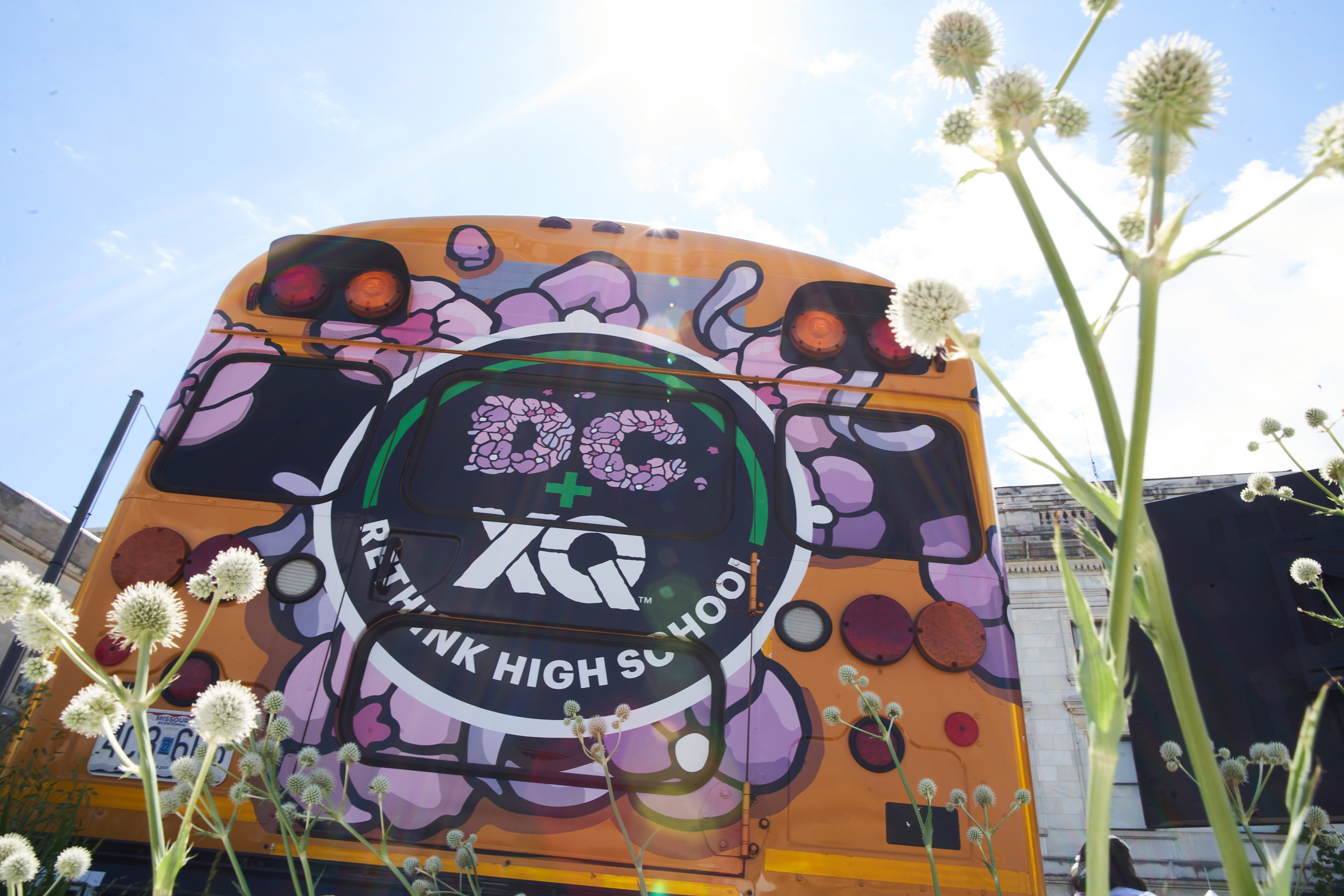Transforming High School Literacy: Responding to NAEP Scores with Science of Reading and Literacy Instruction
Explore how the Science of Reading and multiple literacies can transform high school literacy instruction and improve student outcomes.
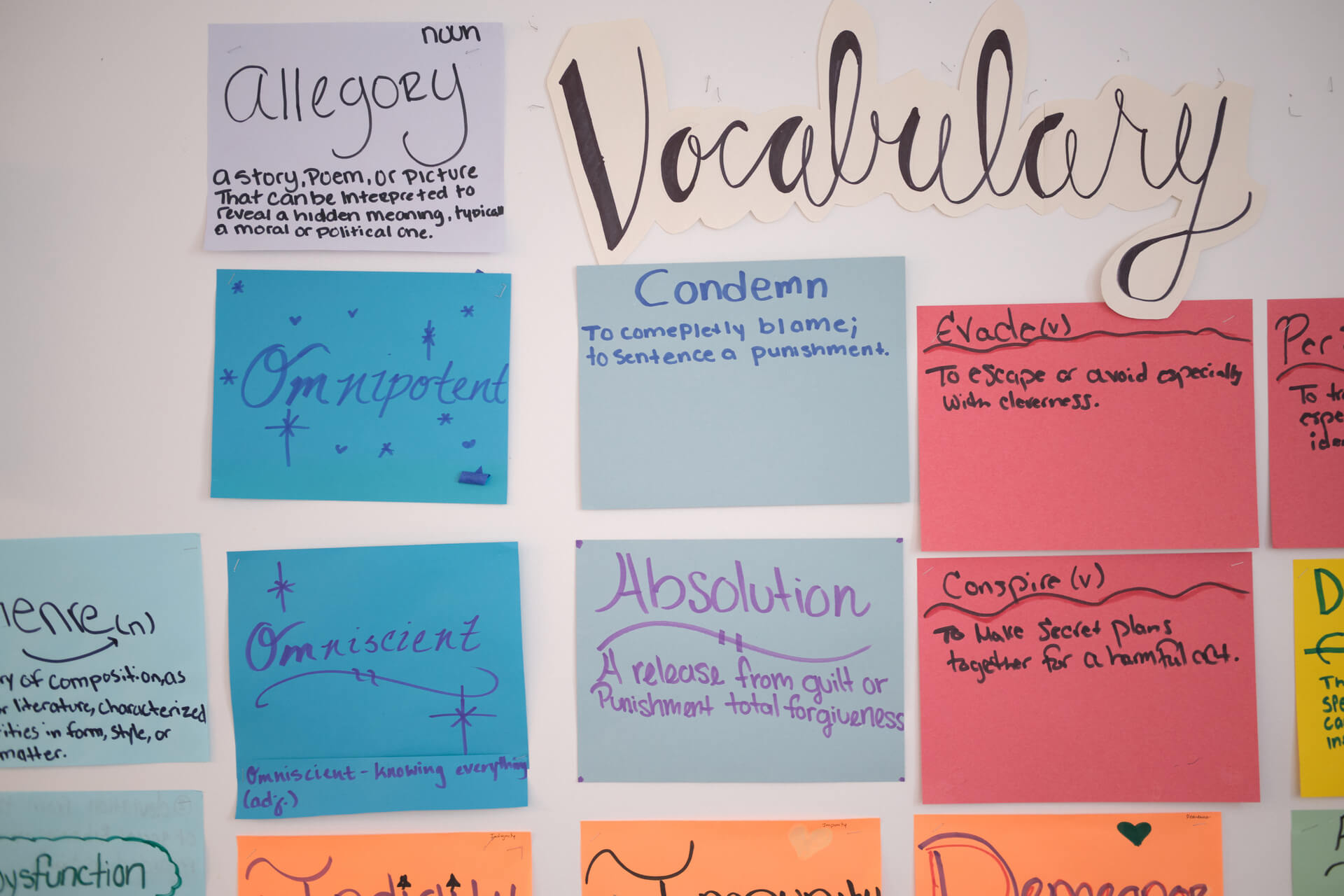
In this article, we outline how high schools can integrate the science of reading strategies into their reading and literacy instruction:
- The Urgency of Transforming High School Literacy Instruction
- Decoding the NAEP Scores for High Schools
- Strategies for Implementing the Science of Reading in High Schools
- Embracing Multiple Literacy Strategies in High Schools
The latest release from the National Assessment of Educational Progress (NAEP) reveals a heartbreaking statistic: nearly a third (31 percent) of 13-year-olds “never or hardly ever” read for fun. Only 14 percent of students read for fun “almost every day,” according to NAEP’s long-term trend (LTT) assessment in the 2022-23 school year—a 13 percentage point drop since 2012.
These NAEP scores are not just numbers—they’re a call to action. Independent reading is a key indicator of lifelong learning. The drop in this NAEP assessment highlights the urgent need for a strategic response to support our high schools’ literacy instruction and development of student reading skills.
The Urgency of Transforming High School Literacy Instruction
Although NAEP’s LTT assessment only included 13-year-olds, many of those same students will be entering high school classrooms in the 2023-2024 academic school year. If NAEP is a finger on the pulse of our country’s education system, those results mean we need to do more to support our high school students’ literacy skills.
In the wake of COVID, the importance of developing strong literacy skills in high school has never been more apparent. Literacy is not just about reading and writing—it’s a crucial skill that empowers students to navigate the world, both in and out of the classroom. Yet, recent data suggest we are facing a literacy crisis.
The Through-Line: From Declining NAEP Scores to New Measures
In May of this year, New York City Public Schools, the nation’s largest school system, announced a significant shift in its reading curriculum. The city is moving away from “balanced literacy” by requiring its schools to embrace practices known as the “science of reading,” which include a greater focus on phonics-based instruction. The topic got more attention recently following the APM podcast series Sold a Story.
New York City isn’t alone. Some states, including California, Ohio, and Georgia, are considering similar changes. And Mississippi and Florida, which have already shifted to the science of reading, say their students are making improvements. The discussion about how to improve reading instruction has been years in the making, and as the recent focus on the science of reading becomes a national trend, new mandates and laws will have significant implications for high school educators as they build their instructional models.
Underscoring this trend is a recent study from the National Council on Teacher Quality (NCTQ), which found not enough teacher preparation programs incorporate the right evidence-based practices for reading instruction. The NCTQ report found that nearly 40 percent of all educator preparation programs do not adequately cover the five critical components of effective reading instruction: phonemic awareness, phonics, fluency, vocabulary, and comprehension. This lack of coverage is a concern as it may lead to teachers being ill-prepared to teach reading effectively.
While the report focuses on elementary instruction, its findings highlight the need for a strategic response across all grades to improve literacy instruction. Recent NAEP scores and the broader literacy challenge, on top of greater attention to the science of reading, could prompt K-12 schools to broaden their reading instruction toolkits.
There is a potential pathway for transforming high school literacy instruction. It’s not a linear cause-and-effect relationship but rather a convergence of insights, strategies, and tools that can help us navigate the complex landscape to support student literacy development.
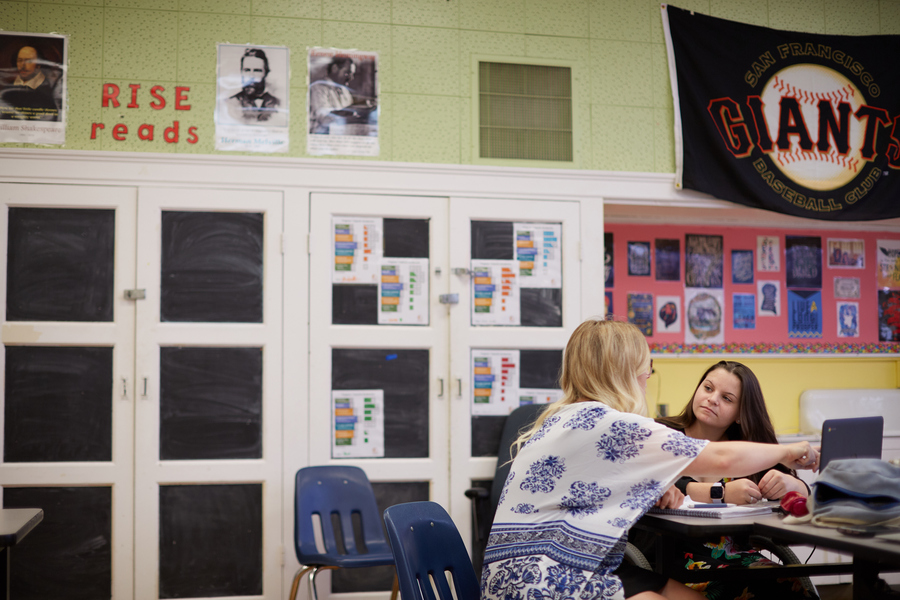
The Problem: Decoding the NAEP Scores For High Schools
NAEP’s long-term trend assessments have been conducted since the early 1970s. Unlike the main NAEP assessments, administered to students in grades 4, 8, and 12, the LTT looks at various indicators for 13-year-olds. The most recent assessment found other reasons to be concerned.
Detailed Analysis of the Recent NAEP Scores
The 2023 LTT results show that 13-year-olds are struggling academically amid achievement declines that worsened during the pandemic on the main NAEP assessments. Lower-performing students saw more significant declines than their higher-performing peers, as they did on other recent NAEP assessments. Today, the average score for 13-year-olds on the LTT reading assessment is about where it was in 1971.
Unlike in other years, scores decreased significantly among students of all percentile levels, races, and economic levels. The declines in reading ranged from 3 to 4 percentage points for middle- and higher-performing students to 6 to 7 points for lower-performing students.
The Solution Part 1: Implementing the Science of Reading
The science of reading is a comprehensive body of research that explores how we learn to read and the best practices for teaching reading. It’s not a curriculum or a program but rather a collection of evidence-based insights that can inform reading instruction. The science of reading encompasses a wide range of areas, including phonics (the relationship between letters and sounds), phonemic awareness (the ability to hear and manipulate sounds in words), fluency, vocabulary, and comprehension.
The science of reading is particularly relevant for high school educators as it offers a roadmap for effective reading instruction that can help students at all reading levels improve their skills. It provides a framework that can guide instruction and intervention, helping educators tailor their teaching to meet the diverse needs of their students. High school teachers can help a broad swath of their student population build fluency across various content areas by improving decoding skills and language comprehension.
Strategies for Implementing Science of Reading in the High School Classroom
Generally, high school educators can start by incorporating instructional strategies that work across multiple disciplines, not just in English and reading classrooms where we typically find them. Because high school students are likely to engage with longer, more complicated texts with higher-tiered vocabulary, strong decoding skills are essential for building student comprehension.
For example, teachers across all disciplines can enhance student reading skills by incorporating activities focused on phonological awareness, which involves manipulating sounds and syllables in spoken words. This strategy helps students better understand what word parts look like and how they sound. In addition to memorizing definitions, teachers can guide students to identify parts of words, such as prefixes, suffixes, and word roots, especially when working with higher-tier vocabulary terms. This approach strengthens decoding skills, builds comprehension, and boosts fluency skills.
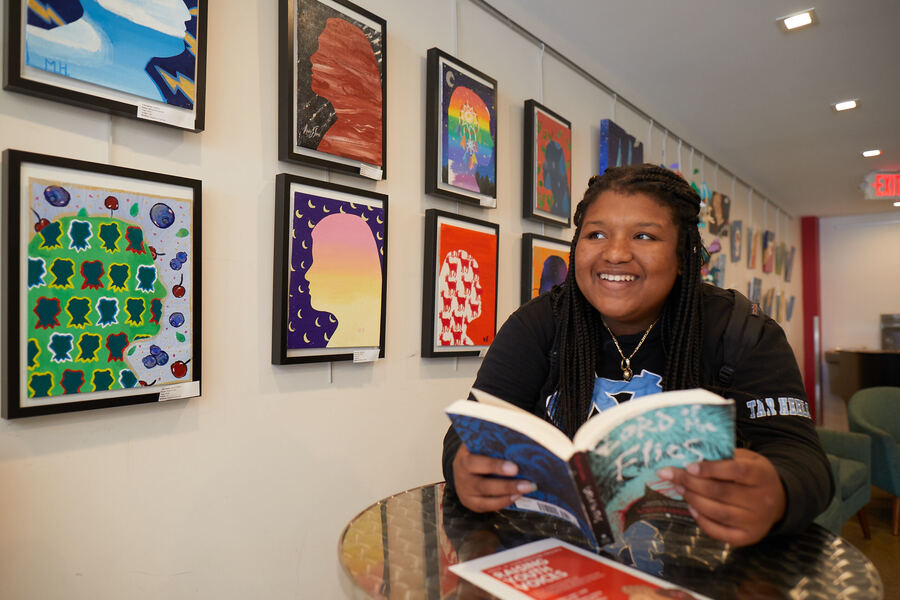
Supporting High School Students Through Targeted Reading Instruction
All high school students can benefit from targeted reading instruction. Educators should consider strategies for students reading below proficiency levels that focus on filling in the gaps in basic phonics skills. It’s also important to provide students with plenty of opportunities to practice reading in a supportive, low-stress environment, no matter what level they are performing at.
Here is a summary of some explicit strategies, examples, and exercises for targeted reading instruction:
- Adopting Graduated Reading Levels: One effective strategy is to use texts of varying complexity tailored to your students’ reading levels. Start with a text that your students can read with a very high degree of accuracy. This allows them to focus on understanding the main ideas without being overwhelmed by complex language. Once they’ve mastered this, gradually introduce more challenging texts. This approach helps students build confidence and improve their reading skills in a supportive, structured environment.
- Explicit Instruction for Specific Literacy Skills: Explicit instruction is a teaching method that breaks down learning into manageable chunks with regular checks for understanding. This could involve the teacher modeling a specific reading skill, such as comprehension strategies, and then gradually reducing their guidance as students practice the skill. For example, a teacher might demonstrate how to use a graphic organizer to map out a text’s main ideas and supporting details. Students then practice this skill in pairs before eventually applying it independently to a new text. It mirrors the gradual release model—I do, We do, You do.
- Enhancing Inference-Making Skills: Inference-making is critical for reading comprehension, especially as students get older and interact with more comprehensive texts. It involves going beyond the literal words on the page to understand deeper meanings and connections. For instance, if a text describes a character looking out at a dark, threatening sky and grabbing an umbrella, students should be able to infer that it’s likely to rain. To develop this skill, teachers can use real-world events or relevant topics. For example, students could read multiple articles about a current event from different perspectives. The teacher could then ask them to make inferences about the motivations of the people involved or the potential outcomes of the event.
These strategies can be particularly helpful for students reading below grade level to improve their literacy skills and gain confidence in their reading abilities. It’s important to remember that every student can make progress with the right support and resources.
Supporting High School Students By Enhancing Reading Instruction
When looking to enhance reading instruction, educators and schools can focus on improving fluency, which includes rate, accuracy, prosody (patterns and rhythms; expressions in reading), and expression in a multitude of ways. One effective strategy is repeated readings, where students read the same text multiple times to improve their fluency.
A simple approach is having small groups of students continuously reading aloud with each other. Schools can also provide these students with challenging texts that push them to apply their reading skills in new contexts and incorporate reciprocal models so students are constantly collaborating and learning with one another.
Below are a series of examples and activities to consider enhancing your instruction, all of which can be incorporated into project-based and place-based learning activities, both of which can contribute to meaningful, engaged learning—one of the six research-based XQ Design Principles for successful high schools. Just be sure to understand the needs of your students when identifying how to scaffold and differentiate appropriately.
- Direct, Explicit Instruction: This involves teaching specific reading strategies in a systematic way. For example, you might teach students about Latin prefixes, such as “ante-” or “contra-” and how those alter the form of words. This kind of explicit instruction can help students understand language rules, making reading and spelling easier.
- Writing Practice: It’s crucial to remember that students’ writing skills may not always align with their reading abilities. Even if students are proficient in reading, they might struggle with expressing their thoughts in writing. Teachers can integrate writing exercises that complement their reading instruction to address this. For instance, in a lesson, teachers could introduce rhetorical devices such as alliteration (repetition of initial consonant sounds) and assonance (repetition of vowel sounds). After explaining these concepts, teachers could engage students in a writing activity where they create their own sentences or short paragraphs using alliteration and assonance. This activity enhances students’ understanding of these rhetorical devices and helps them develop a more nuanced appreciation of language and its potential for creative expression. Exercises like this can help students improve their writing skills while also reinforcing their reading comprehension.
- Cognitive Strategies: Teaching students cognitive strategies can also enhance their reading skills. These strategies, which can strengthen comprehension and fluency, are for educators across all disciplines. They include: activating prior knowledge, inferring, monitoring and clarifying understanding, questioning, searching and selecting relevant information, summarizing, visualizing, and organizing information. Each of these strategies can be taught explicitly and practiced in the classroom.
- Multi-Sensory Learning Activities: Engaging multiple senses during learning can enhance students’ understanding and retention of literacy skills. Multi-sensory learning involves using visual, auditory, kinesthetic, and tactile senses to teach and reinforce concepts. For instance, when teaching a new phonics pattern, teachers could incorporate visual aids or cues in their auditory exercises, like repeating sounds, and kinesthetic activities, like tracing letters or words.
Teachers could incorporate games involving these senses for a more interactive experience. For example, a game could include students drawing flashcards with words that follow a specific phonics pattern. Students would then say the word aloud, trace it in the air, and write a sentence using it. This multi-sensory approach not only makes learning more engaging but also reinforces the phonics pattern across different contexts, enhancing students’ reading, speaking, and writing skills.
Remember, the goal is continually challenging and engaging students, helping them become more proficient and confident readers.
By implementing these science of reading-focused strategies, high schools can provide effective, evidence-based reading instruction that helps all students improve their reading skills, regardless of their current proficiency level. These strategies can help address the issues highlighted by the NAEP data and ensure that all students have the reading skills necessary to succeed in high school, college, career, and beyond.
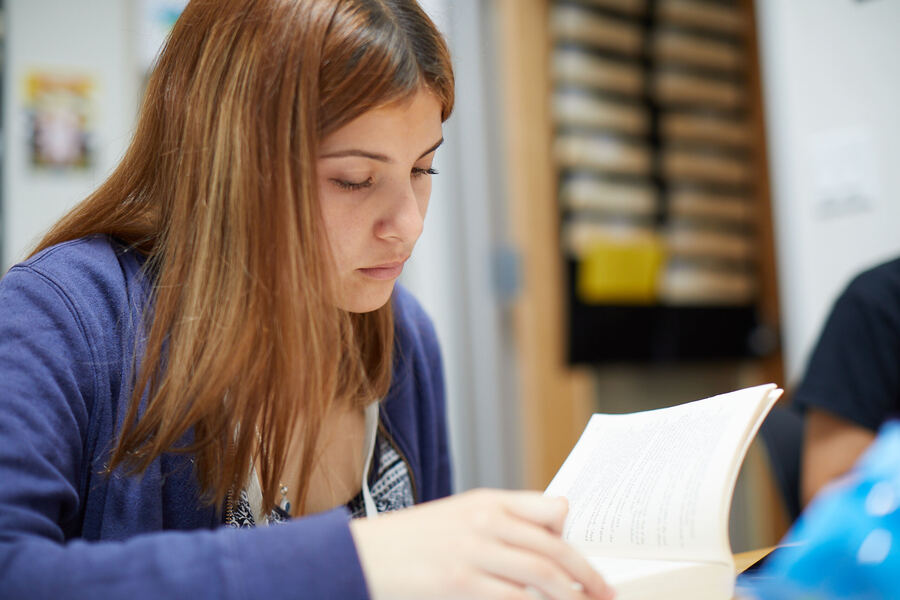
The Solution Part 2: Embracing Multiple Literacies
In the high school setting, literacy extends beyond just reading and writing. It involves a range of skills and competencies students need to navigate the world effectively. At XQ, we’ve identified these in our XQ Learner Outcomes—a set of competencies designed to prepare students for success in the 21st century. The XQ Learner Outcomes go beyond traditional academic skills by including critical thinking, problem-solving, collaboration, and more.
One of the outcomes, Masters of Fundamental Literacies, emphasizes the importance of students gaining proficiency in essential academic skills, including reading, writing, and mathematics. But it also recognizes that literacy in the 21st century extends beyond these traditional areas, including digital literacy, financial literacy, and other skills necessary for navigating our complex, rapidly changing world.
When students master these fundamental literacies, they’re not just becoming better readers or writers. They’re also becoming better learners, equipped with the skills to acquire new knowledge, understand complex problems, and communicate effectively in various contexts. They’re preparing for success in college, in the workplace, and life.
The Need for Teaching Multiple Literacies in High School
High school students are not just learning to read and write—they’re learning to communicate, analyze, and engage with the world around them. They’re reading novels, sure, but they’re also interpreting graphs, navigating websites, analyzing news articles, and engaging with multimedia texts. Each of these tasks requires a different set of literacy skills. By implementing instructional strategies for literacy transformation, we can help students increase their reading proficiency while improving their literacy skills.
By teaching multiple literacies, we can better prepare students for the diverse range of texts they’ll encounter in college and the workplace. We can help them become critical information consumers, able to discern reliable sources from unreliable ones. We can empower them to communicate effectively in various formats, from essays to emails to social media posts, and how to use advancing technologies such as generative AI in their learning and beyond.
To learn more about creating meaningful, engaged learning (another XQ design principle) in ways that promote these skills for high school students, check out these resources.
How Multiple Literacies Can Enhance Reading Instruction for High Schools
The science of reading provides a strong foundation for literacy instruction. It equips students with the basic decoding skills to read words on a page. But to truly comprehend and engage with a text—to analyze its arguments, understand its implications, and make connections to other texts, students need the skills taught through multiple literacies—especially as information becomes more integrated into digital and social media formats.
For instance, a traditional lesson on media literacy might involve analyzing the information presented, comparing perspectives, or identifying any biases. However, if students cannot comprehend and decode the words they read, achieving those crucial skills for media literacy may prove difficult. Blending the science of reading strategies with literacy instruction enhances students’ reading comprehension and teaches them how to be critical thinkers about the content they consume or engage with.
Incorporating multiple literacies into science of reading instruction doesn’t mean abandoning phonics or other evidence-based practices. Instead, it means expanding our definition of literacy to include the diverse range of skills students need to succeed in the 21st century. It means recognizing that literacy is not a monolith but a multifaceted, dynamic skill set that evolves with our changing world.
Conclusion
As we reflect on the through-line from the recent NAEP scores to the science of reading and the importance of embracing multiple literacies, it’s clear that we stand at a pivotal moment in high school literacy instruction. The challenges illuminated by the NAEP data are significant, but they also present an opportunity for transforming education. By implementing evidence-based reading instruction strategies and embracing a broader definition of literacy, we can help all students improve their reading skills and prepare for success in the 21st century.
Innovation in literacy instruction is an ongoing process. As educators, we must continually seek new strategies, tools, and resources to support our students. We must be willing to adapt and evolve our teaching practices to meet the changing needs of our students and the world in which they live.
Create Transformation: High school transformation is necessary, possible, and already underway! Stay updated on innovative changes across the country by subscribing to our XQ Xtra Newsletter. Get the latest success stories, strategies, and resources delivered straight to your inbox, and join us in reimagining the high school experience for every student.
Image at top: Vocabulary whiteboard at Washington Leadership Academy. (Photo by Maya Wali Richardson)


